Finishes and materials
Whatever the interior column is made of, it consists of 3 parts:
- Base. Foundation, lower part. She has to withstand the total weight, so reliability is more important than decor.
- Trunk. Main part. There are various shapes and sections: circle, square, polygon.
- Small caps. Top element. It is the most expressive part, the main decor is usually placed on it.
In the photo, a way to decorate a column with mirrors
Supporting and decorative columns in the interior are made from a variety of materials.
A natural stone. In the classic interiors of the 18-19 centuries and ancient architecture, marble, granite, and malachite were most often used. But for the manufacture of modern columns, stone is rarely used. This is due to the high cost and complexity of the work. Recommended for spacious rooms and rich furnishings, a stone pillar in a small room will look defiant.
Concrete. This versatile material is often used in supporting structures, both outside and inside the building. The design of the columns is laconic, no frills. The shape is most often simple: round, rectangular. Monolithic concrete structures are erected during the construction of houses, or prefabricated ones are ordered from manufacturers.
Brick. One of the options for modern columns, is popular in industrial interior styles. It is erected quickly, simply, it will last a long time. Plaster and finish with any material or leave bare brick as a design element.
Wood. Columns in the interior of a house often correspond to the material from which it was erected - therefore, in a cobbled frame, a wooden post is the place to be. Although in an apartment decorated in eco, provence or country style, this design will also be appropriate. They are even capable of performing a load-bearing function, reducing the load on the floors.
Metal. If you need practical, reliable and simple - choose this option. Metal columns in the interior will decorate loft, hi-tech, modern and any other modern style.
Drywall. You can easily create such a column in an apartment yourself, without spending a lot of time and money on the process. Decorate on top in any suitable way: wallpaper, plaster, paint, stone, wood panels, tiles. The interior element will withstand not only finishing materials, but also TV, photo frames, paintings, and other decorations.
Gypsum. Products made from this natural mineral are inexpensive, but durable. The plasticity of the material and ease of processing allows you to create extraordinary shapes with amazing designs - from simple chamfers and patterns to complex volumetric bas-reliefs. Another advantage of gypsum structures is the possibility of repair. Cracks, scuffs and chips can be easily removed.
Polyurethane. Lightweight and cheap, but completely fragile. Ideal for decorative models, because the appearance is not inferior to more expensive plaster. Products are resistant to staining, so they can be of any shade. You can choose a ready-made one, assemble it yourself from several parts, or make it to order.
In the photo there is a column against the wall in the living room
What style can you use?
Columns in the interior of the apartment are used in a variety of styles - from classic to ultramodern.
Classic. The epithets that characterize the direction are elegance, wealth, sophistication. Racks made of natural or artificial stone, plaster, polyurethane are suitable. Finishing with decorative plaster, stucco decoration looks appropriate. Use flexible stone to create an imitation on any source material, this will help save on decor.
Oriental. More often they do not put a separate column in the room, but several at once, uniting them with arches. Such a colonnade is used to replace missing partitions in studios and other open spaces. In the East, they love luxury, so you shouldn't skimp on finishing. Decorate with mosaics, fancy ornaments, flowers, gold.
Loft. High ceilings, large open spaces - the columns are inviting for the interior. To make the room look as industrial as possible, the structures are made of concrete, brick or metal, without finishing over any decor. The shapes and lines are also simple, the section is square or round. A black I-channel made of thick metal looks original as racks.
The photo shows a modern dining room in the apartment
High tech. In the traditional sense of the style, there are no columns in the apartment, but if they are already provided for by the architect - finish with modern materials. Chrome metal is best, but glass, backlit panels or futuristic aquariums with air bubbles will also work. Lava panels are available to order, looking like a large lava lamp.
Country. The rustic style prefers wooden decorative elements, the decoration of the columns is no exception. The pillars look differently: a neat cylindrical beam, an irregularly shaped rough-hewn trunk, a half-column made of painted boards.
Baroque. Pompous, luxurious antique design does not accept half measures, therefore the columns in the room are preferable from natural stone, mahogany and other expensive materials. The uniqueness is emphasized by the intricate decor of the capital, to make this element stand out, add highlighting below.
Modern. The direction is distinguished by asymmetric shapes, curved lines. The custom-made design will become the hypnotic center of the entire home. Floral patterns, repeating ornaments are welcome as a decor.
How to beat the column?
So that the column in the interior does not look like a thorn, it is necessary to find the right application for it.
Technics. Install the TV on a column slightly wider than it, inside it (if made of drywall) they hide the wires. Above or below, there will be room for the audio system.
Shelves. It is convenient when two columns in an apartment are located at a short distance from each other. Then shelves are hung between them and used for open storage.
Table top. The design of a kitchen with a column in the interior is simplified, thanks to the ability to use the column as a support for the island, peninsula, bar counter.
Cupboard. Install shelves and dividers inside the column in a modern interior and you get a spacious additional storage. It houses a bar with wines, books, souvenirs and any other things.
Couch. Place a few seats around the column in the corridor and solve the problem of where to sit when getting ready or put your bag when you get home.
If you do not want to endow the structure with any functionality, there are several ways to "dissolve" it in space:
- Hide in furniture. That is, put a couple of cabinets so that the post is inside them.
- Disguise under the walls. Use the same finishing materials for walls and columns.
- Cover with mirrors. The room will become more voluminous, the mirror structure will be invisible.
- Combine with photo wallpaper. Choose the right print to make the half-columns part of the wall art.
In the photo, a way to beat a column in the interior using a TV
How do they look in the interior?
In the modern interior of apartments and houses, pillars are rare. But if you are a happy owner of high ceilings and a large area, be sure to add this decorative element to your design.
In small rooms, false columns will come to the place. Thanks to the vertical, they will make the room visually higher, plus they will replace bulky partitions and zone the space.
The use of architectural elements depends on where they are located:
- Living room. They hang TV, pictures, install shelves. An electric fireplace will stand inside the wide structure, and the air duct of a classic stove is hidden in it.
- Bedroom. They hang a TV, use it to separate the sleeping area and another area. Place a pair on either side of the bed to highlight the headboard.
- Corridor. Install mirrors or coat hooks.
- Kitchen. Used as a support under the countertop, hidden between cabinets. Paint with slate paint to use as a decorative element.
- Children's. Decorate under a fabulous tree, place shelves, climbing hooks.
In the photo, the design of the hall in a blue palette
Photo gallery
Before starting repairs, decide whether to highlight the column or make it invisible. This will be the starting point for developing a design project.

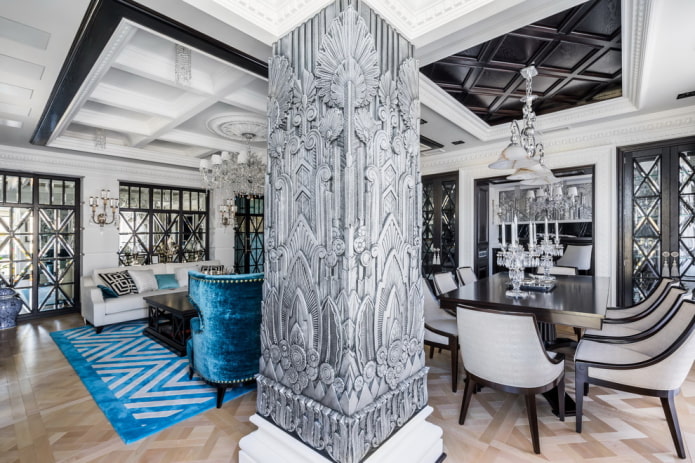
 10 practical tips for arranging a small kitchen in the country
10 practical tips for arranging a small kitchen in the country
 12 simple ideas for a small garden that will make it visually spacious
12 simple ideas for a small garden that will make it visually spacious
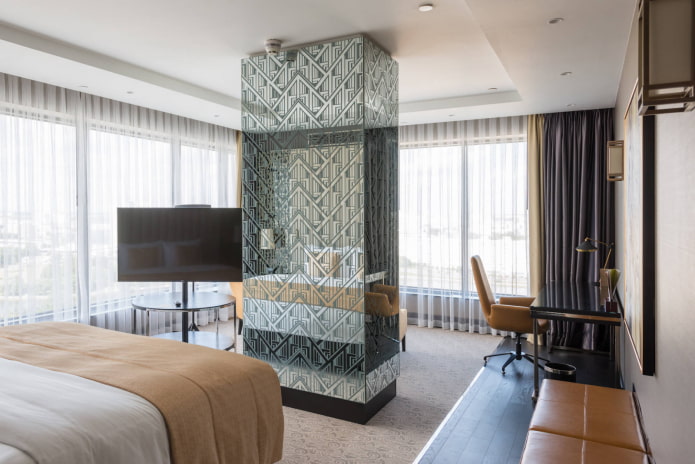
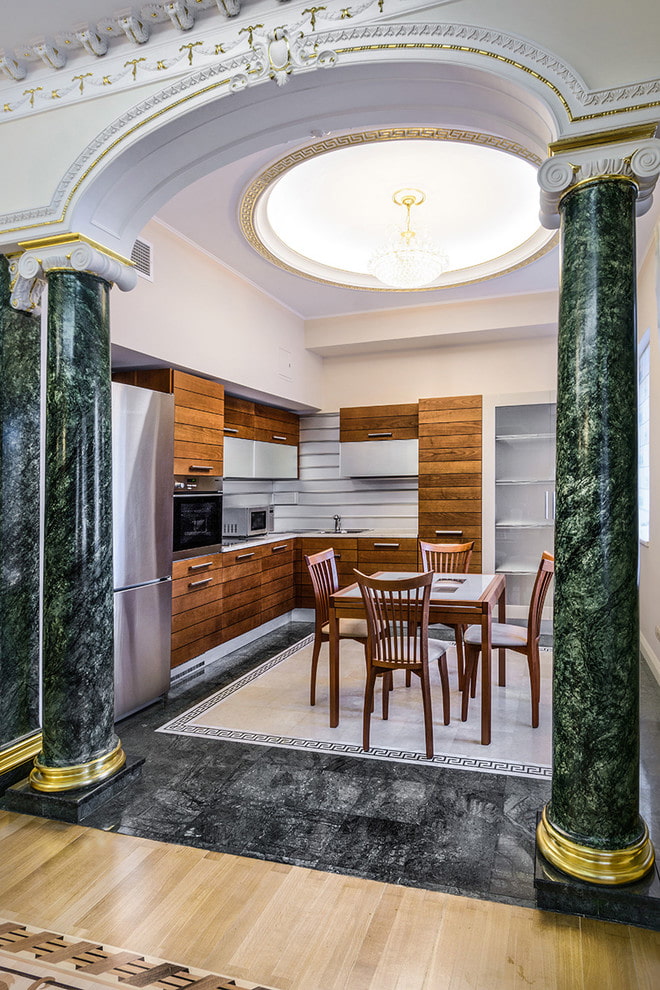
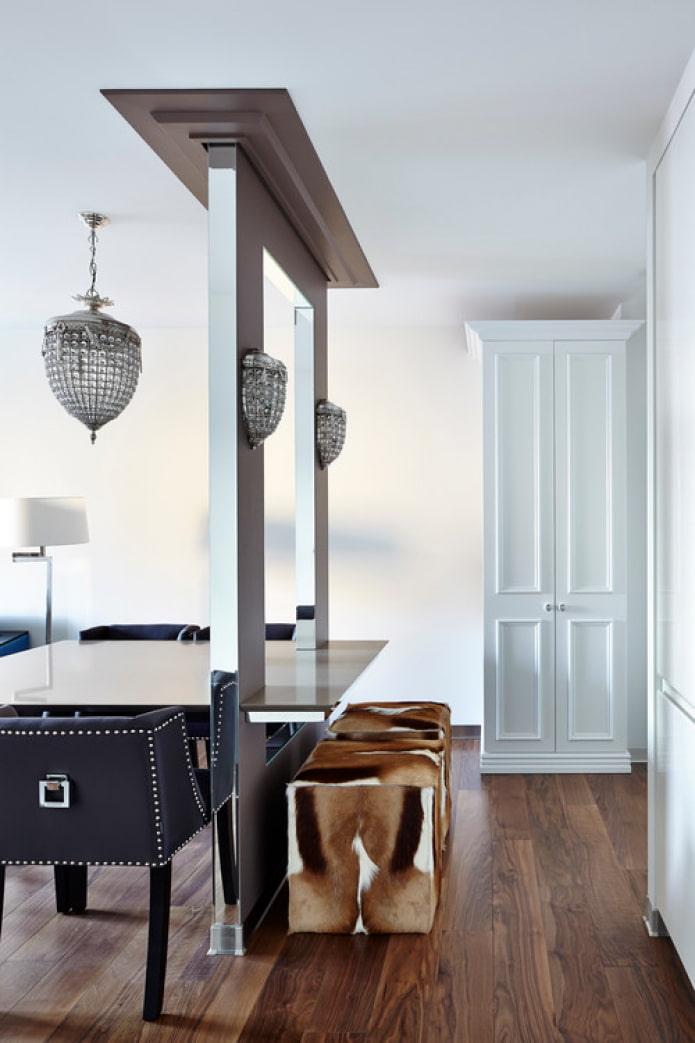
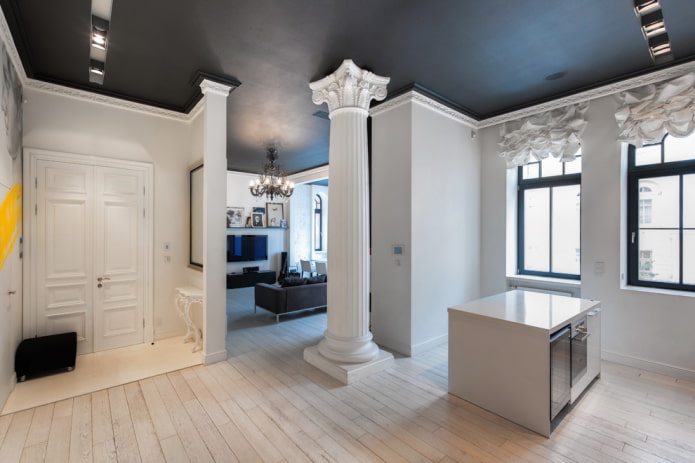
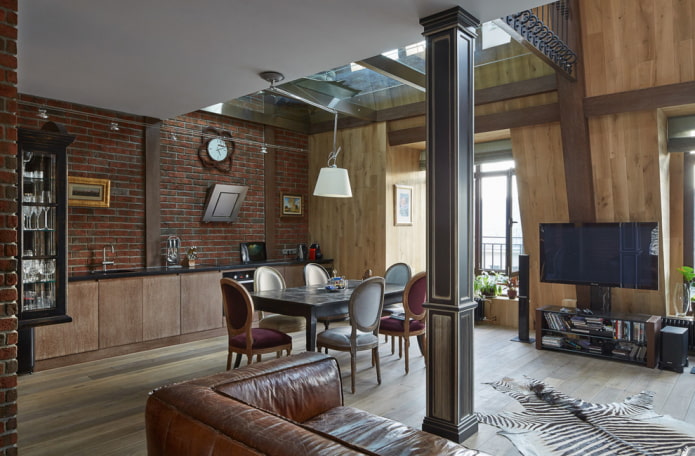

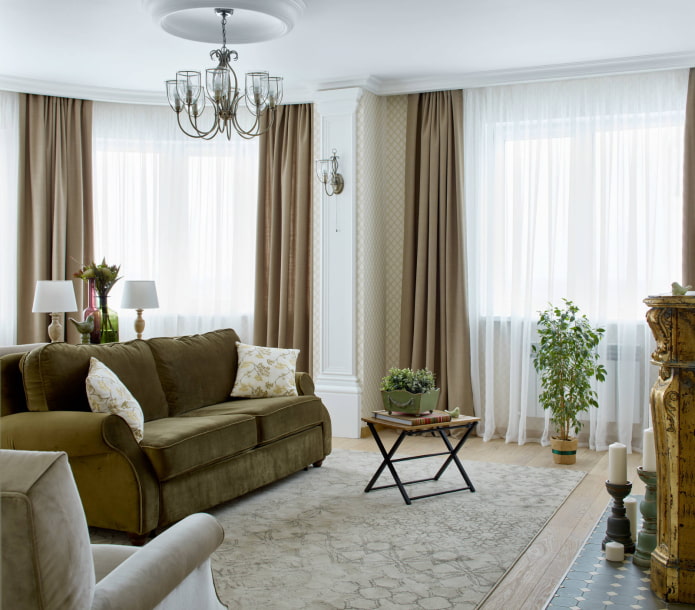

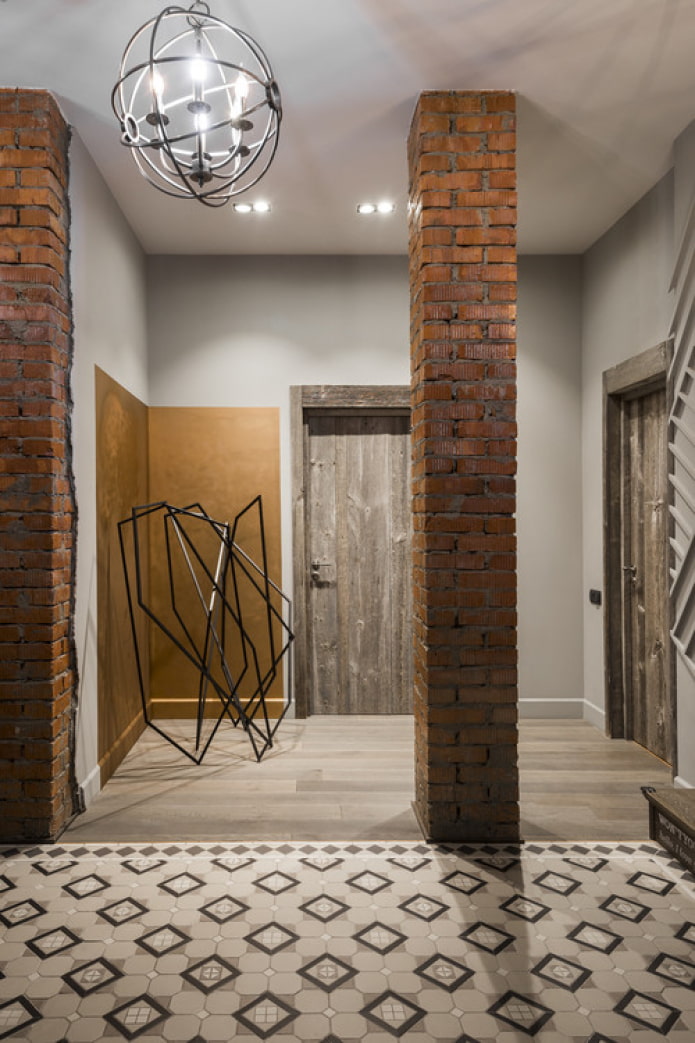
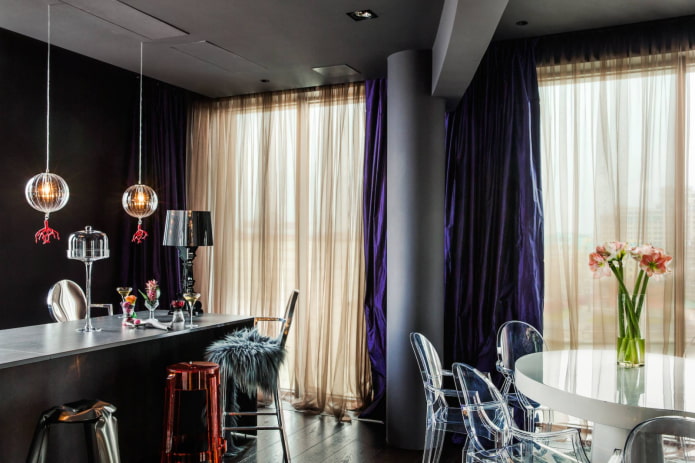
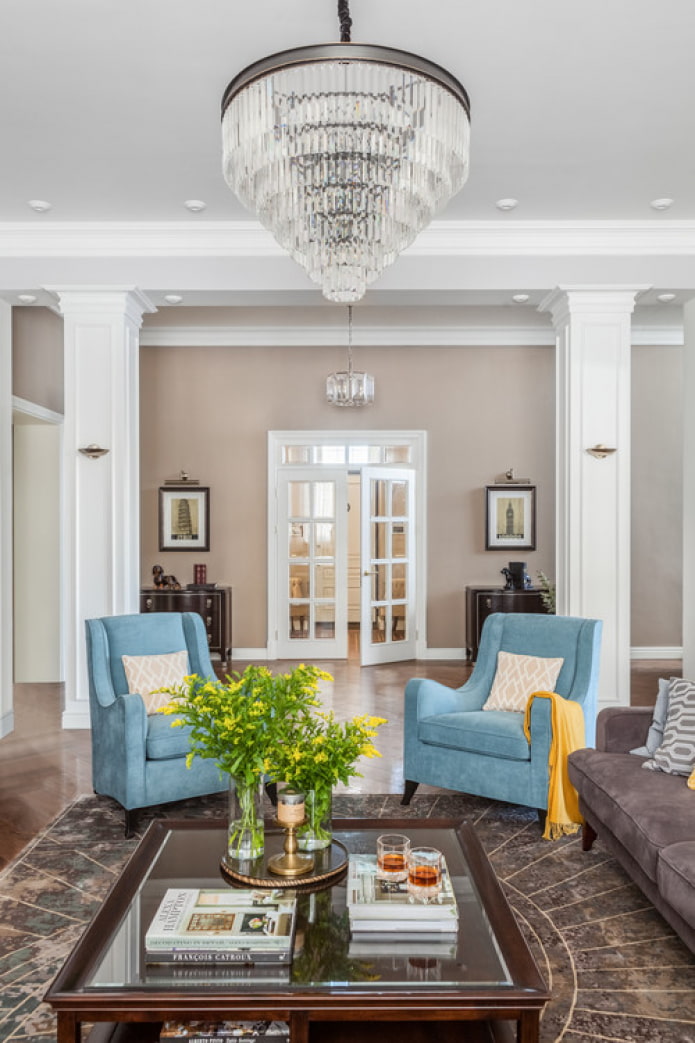
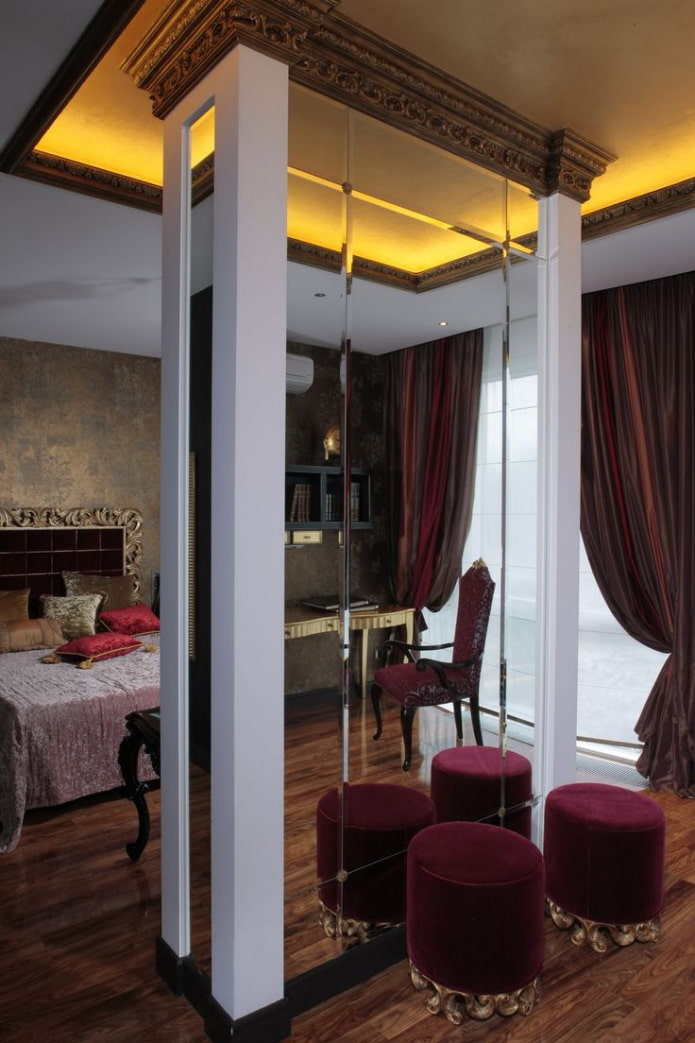
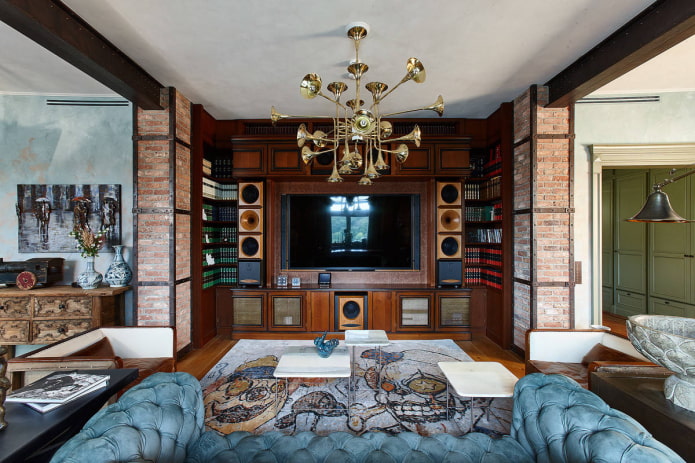
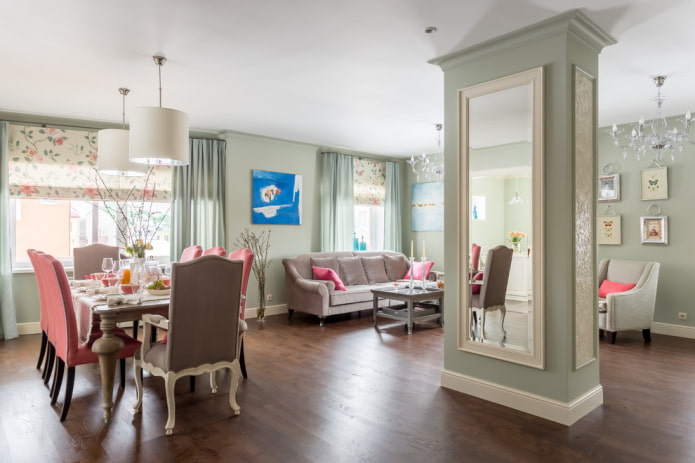
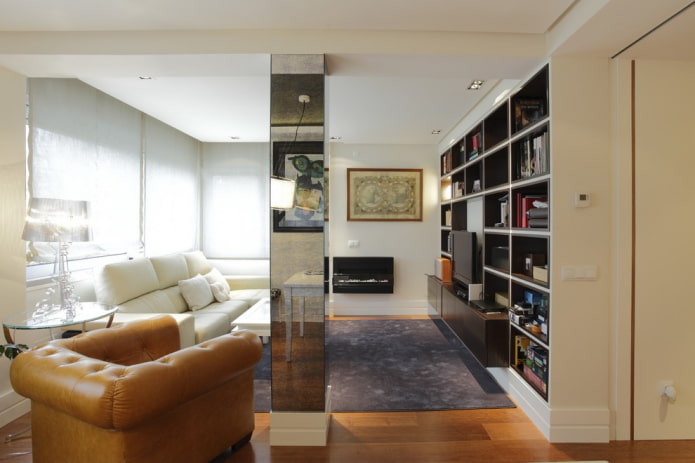
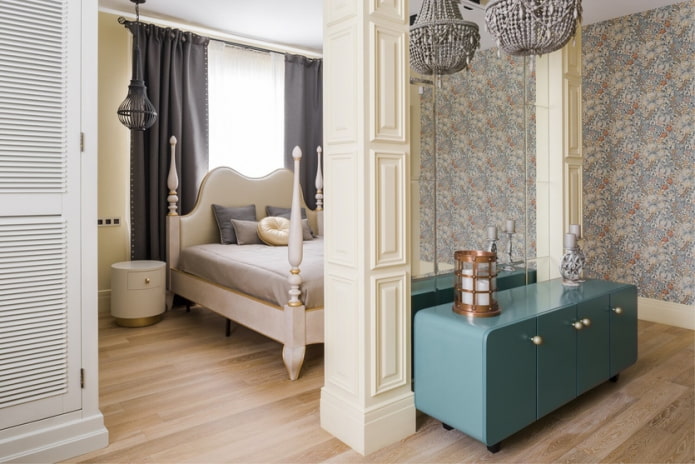
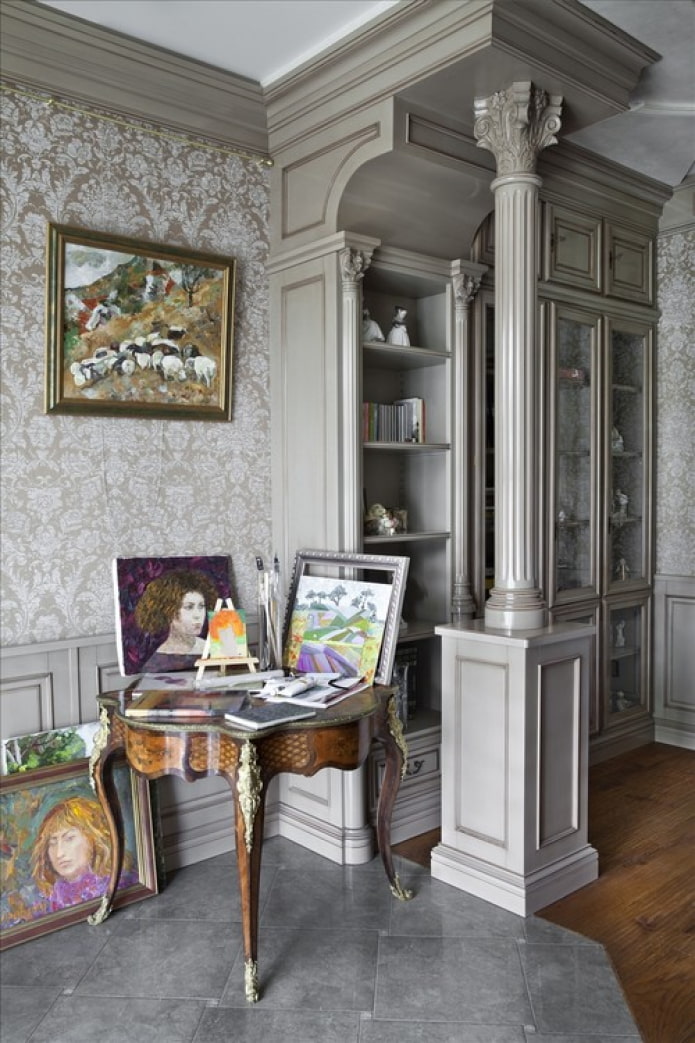
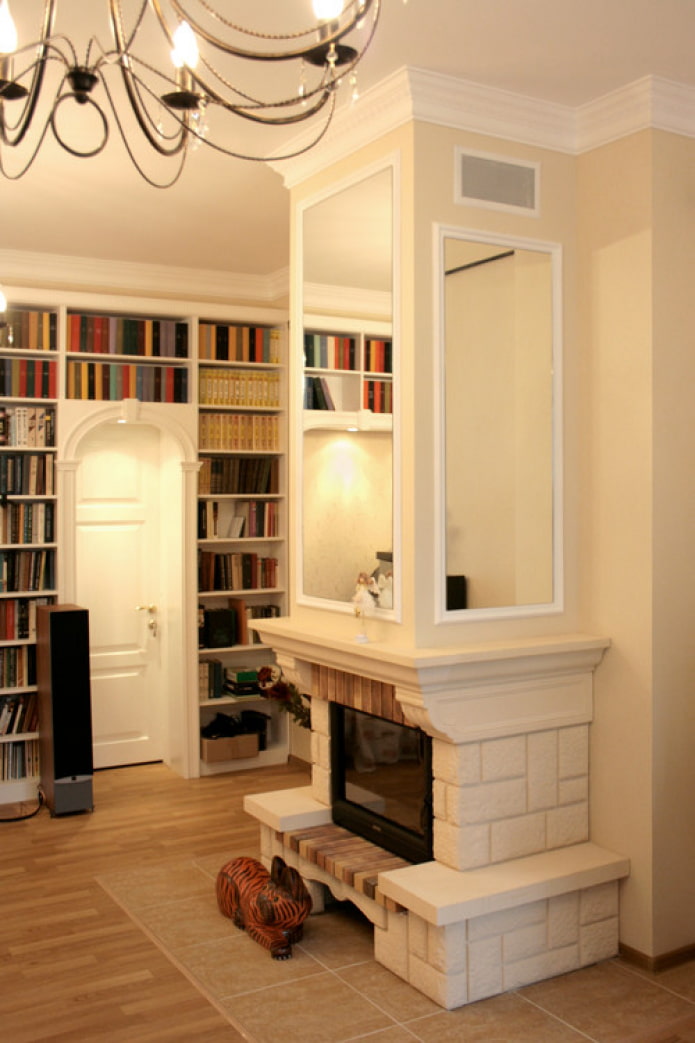
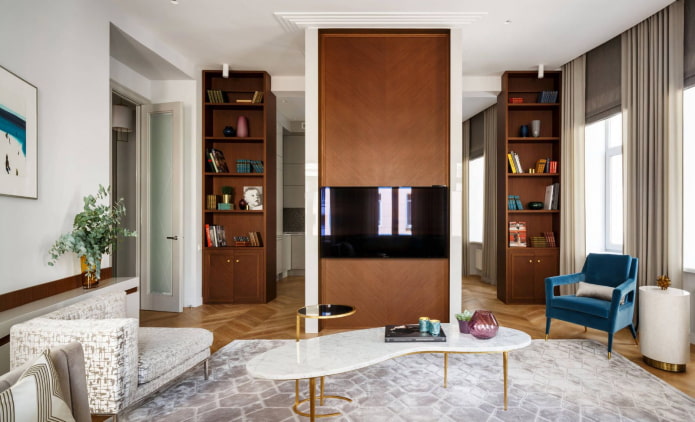
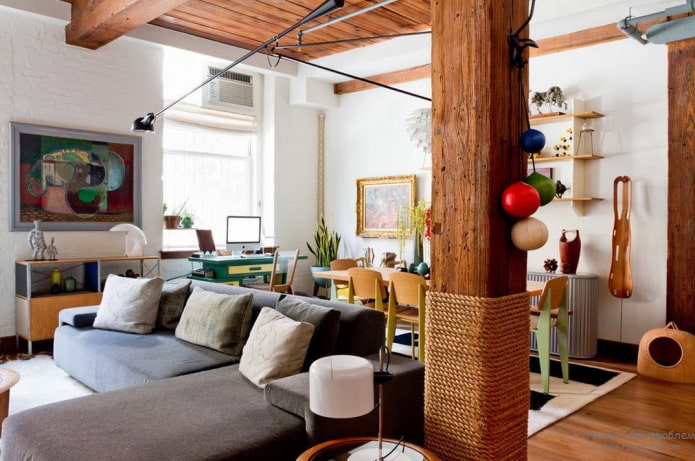
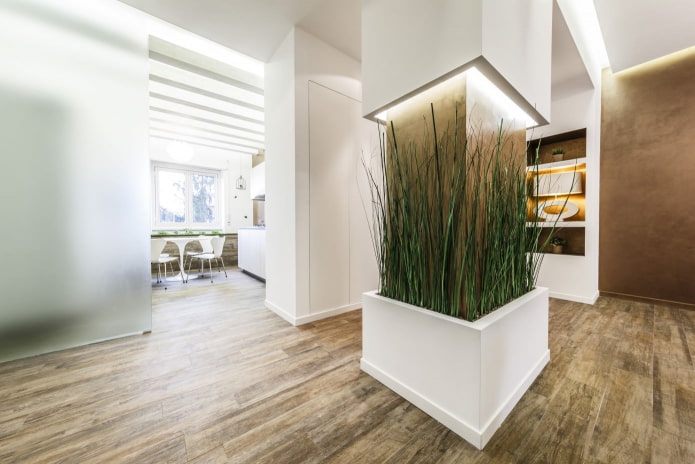
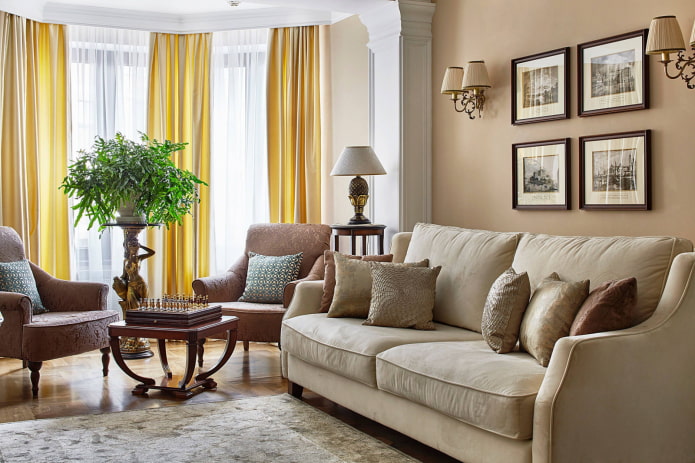
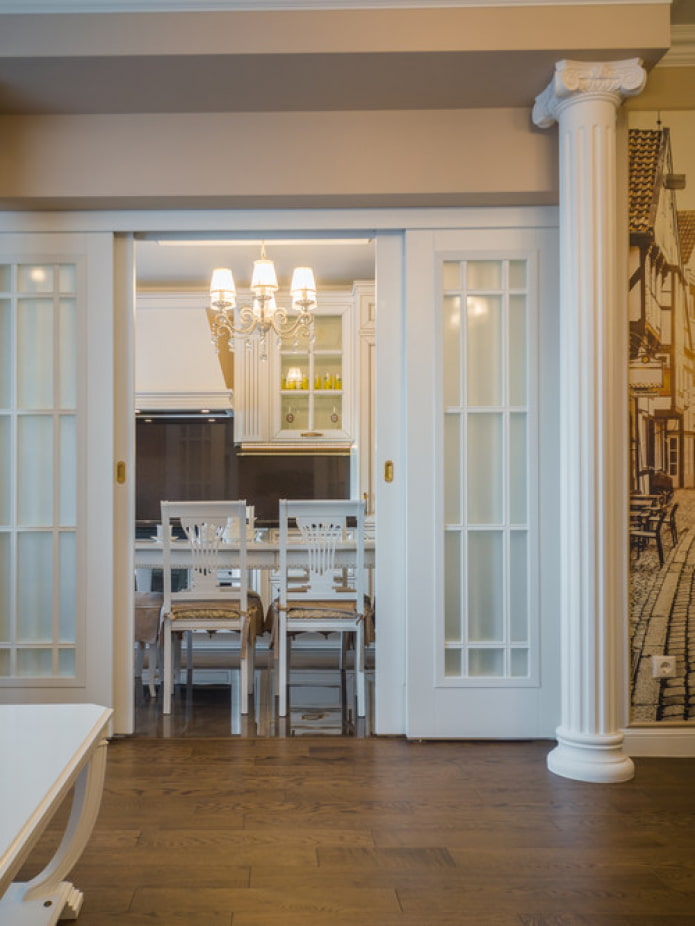
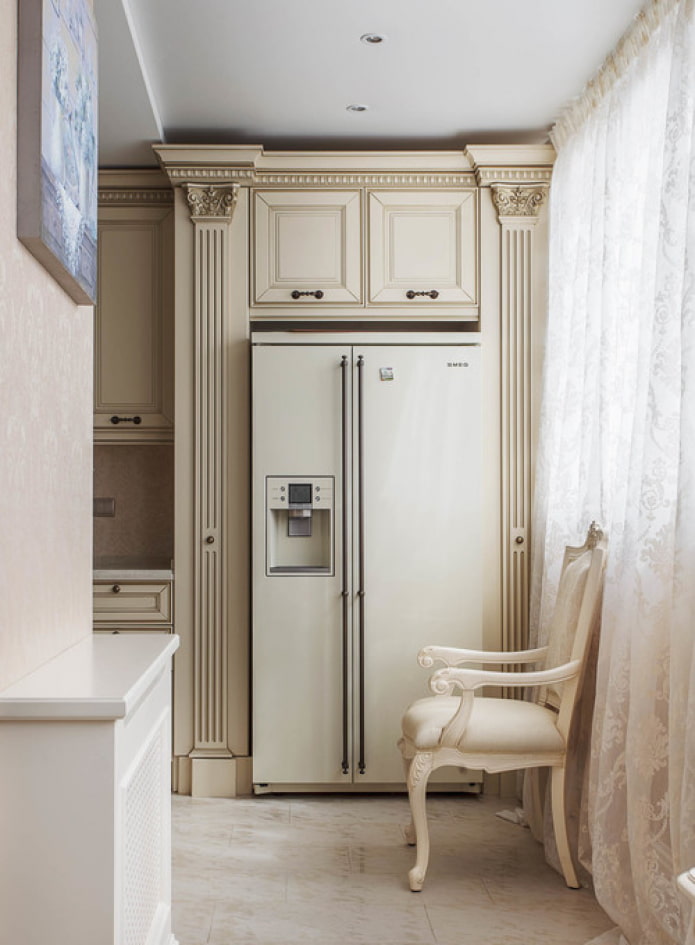
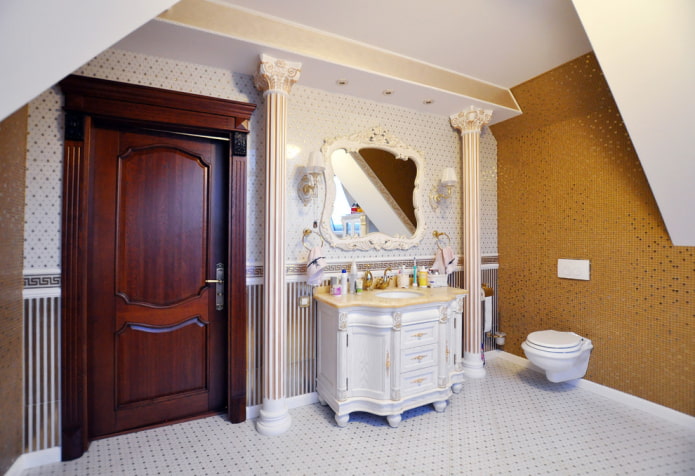
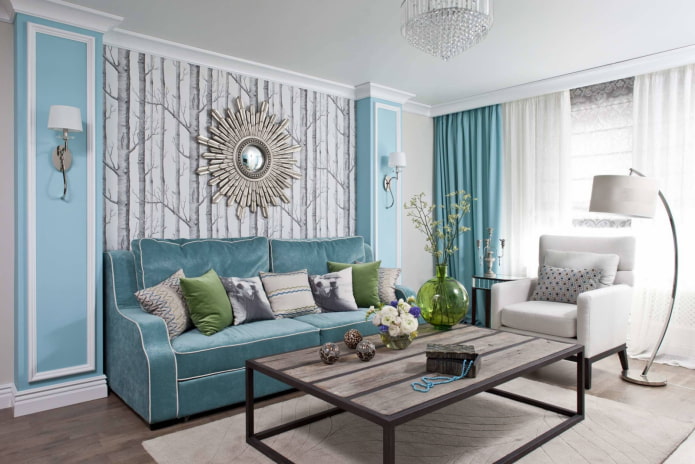
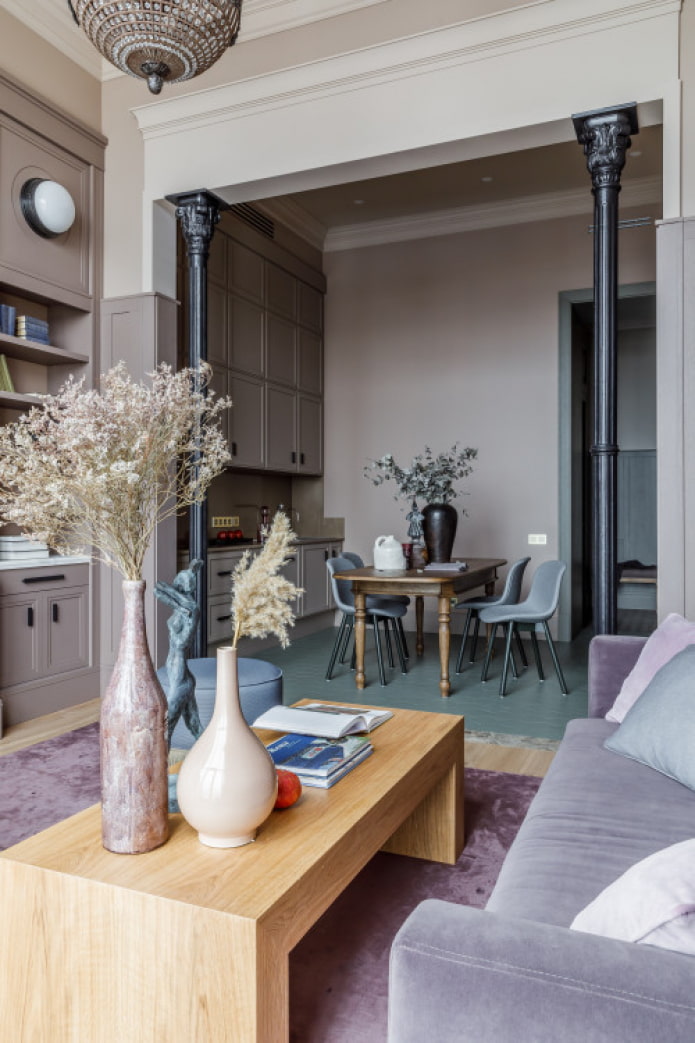
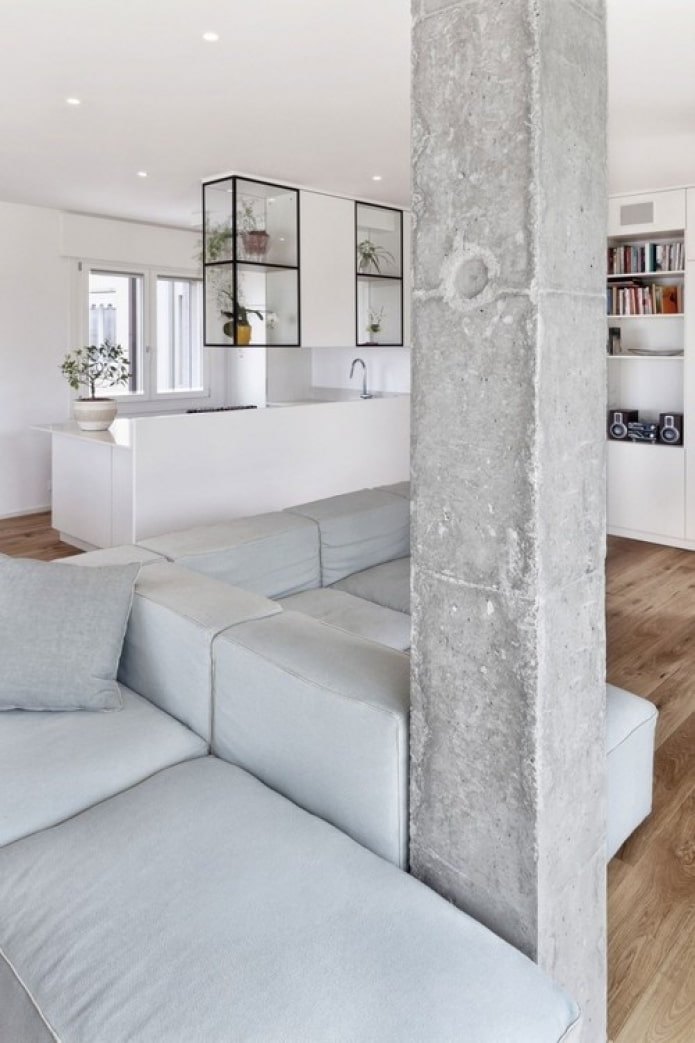
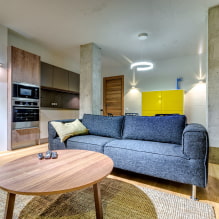
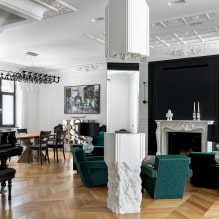
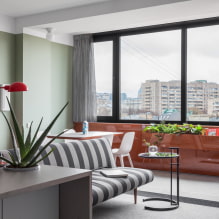
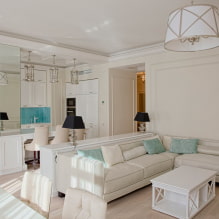
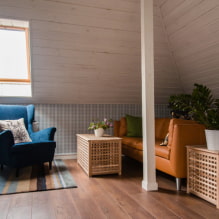
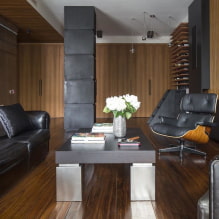
 13 bad habits a good housewife shouldn't have
13 bad habits a good housewife shouldn't have 24/7 home cleanliness - 4 secrets for the perfect housewife
24/7 home cleanliness - 4 secrets for the perfect housewife 6 hotels in Sochi that will give odds to the promoted foreign hotels
6 hotels in Sochi that will give odds to the promoted foreign hotels Top 10 interior design trends 2020
Top 10 interior design trends 2020 Rating of cheap TVs with Smart-TV
Rating of cheap TVs with Smart-TV New Year's LED garlands on AliExpress - we disassemble while it's hot, so that it's bright at home
New Year's LED garlands on AliExpress - we disassemble while it's hot, so that it's bright at home